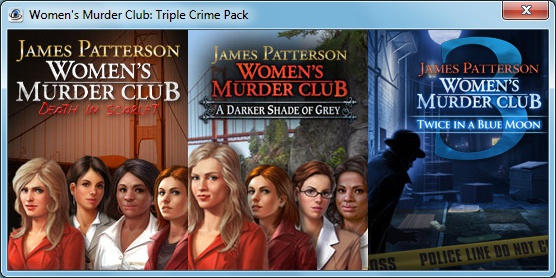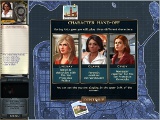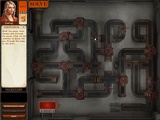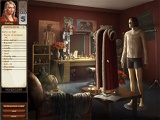





Magic and Mystery Bundle - 3 in 1:
Kuros
Rasputin's Curse
(Tradewinds Odyssey - see under
Other games)

To tackle these games in backwards order: the third is a mission-driven sim, the second is a hidden objects game and the first is a puzzle game with hidden objects, like the Dream Chronicles series. They make a rather odd bundle, as Tradewinds Odyssey is funny, Rasputin's Curse is devoid of humour and Kuros takes place on the fictional planet of match-3 games Glyph and Glyph 2. The games have nothing in common, and one of them is even rather unpleasant. So I'll start with that one: Rasputin's Curse.
This wouldn't be the first game made by Russian gamemakers, but this time the subject matter is also Russian. Far from being as apologist as Midnight Mysteries: The Edgar Allan Poe Conspiracy (Poe wasn't mentally unstable, oh no, it was his enemies conspiring against him!) the game makes the historical figure into a greater monster than he reputedly was. This game is not child-safe: an American woman with Russian roots, urged by her husband to join him on a self-discovery trip to revive their fading marriage, comes home to find him in the shower with a racy blonde. Her young son has a mysterious health problem that the doctor promised to look into, and she has recurrent blackouts where her face creases up alarmingly as a dark figure inside her head calls her name. The infidelity was the last straw, and as she has already left her son with gran and gramps and made all the necessary preparations for a journey to Moscow, she leaves alone. At the hotel, the desk is unmanned and she really needs tea, so she breaks into the tea cabinet. Hidden object games have had me do a lot of picking locks and breaking into places, but this scene made me feel awkward. She keeps running into hints and snippets about Rasputin, so, to keep her mind off her emotional troubles, she researches him, and accidentally slips into the past to meet the man himself. He abuses her fear for her son's health, and... she escapes eventually, but as the only charm of the game is finding out the ending, I won't spoil it.
The story is dark. The background music is depressing (perfect for long winter nights...) and the whiny little boy, who has a diabolical moment at the end of the game, evokes instant antipathy. The hidden object screens are very normal, containing almost no out-of-place objects, which somehow makes objects harder to find, as does the fact that I sometimes need eagle eyes to spot them; I made frequent use of the self-recharging hint button. Somehow, the game seems unbalanced, with objects not equally distributed but sprinkled here and there. Once out of her clinically clean home and in the Russian village that her research leads her to, the likeably tough main character witnesses scenes of rural squalor and meets a cheerless young woman ("First, we make soup") who could have come straight out of a George Orwell novel. To make the game extra jarring, the unpleasant but moving end is followed by the mundane, and incorrect, announcement that this is a demo.

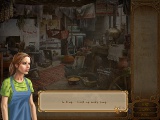
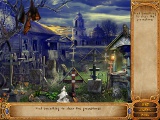
Despite the premise that the planet Kuros is dying, Kuros
is, by comparison, a funny and light-hearted game. A woman in black leather
(eye-candy!) wakes up, amnesiac, in a wood near an overgrown obelisk. Spacy
synthesizer music plays in the background. Unfortunately the game is voiced, but
it has subtitles, and can be played with sound turned off. Her first steps lead
her into a sandy pit. Deciding that the best course of action is to get out of
the pit, she collects a number of items, not from a to-find list, but from a
circle of silhouettes (first screencap), and combines them to get at the
contents of a bag hanging off a rock. The bag contains map fragments, and each
time she's found ten of them, the player has put the pieces together into what
looks like a watercolour painting of a new location. She travels between the
available locations from a screen looking down on Kuros' land mass, which
becomes larger as more maps are assembled, and spends as much time solving
(simple, see third screencap) puzzles as finding objects. There is no hint
button, but two kinds of object hidden in the scenery are chromatic lenses, to
find a hidden object, and scrying mirrors, to solve a puzzle. There are about
five of each, so it's just as well that the game is so easy.
Kuros consists of five landmasses, one for each element. Wood, a forest.
Fire, a volcanic plain that has a meeting place for guardian beings. Water, a
beautifully clear sea with an observatory reachable by cable car. Metal, a plain
of metal shapes and a stronghold with a field of silver - literally - lilies.
And finally, in the snow-topped mountains, Aether, where an ancient library
lies, containing books with... odd... titles (fourth screencap). Directed to the
house of the Oracle by a helpful Ent-type creature called Oakbeard, the woman
makes mental contact with her teacher, an old wizard, and finds out that her
name is Katya and her mission is to restore all parts of Kuros by freeing up the
obelisks and completing the glyphs inscribed on them with a wand she found in a
barrow (second screencap). After restoring all glyphstones, as the obelisks are
called, she is transported to a faraway rock called the Accordant Acropolis
(fifth screencap) where she will find the villain who has compromised the safety
of not only this planet, but the whole universe. This is the only moment when
the voice-over adds something to the game: the villain is Viktor, the wizard's
neglected and embittered son. When the wizard asks him why he would do something
that could destroy even the universe, Viktor replies: "Let the death of the
universe stand as a reminder of how much I hate you, dad." Katya tries to
apprehend him; the wizard tells her to forget about him, as it is more important
to repair the glyphstones, and the final line Viktor delivers before leaving is:
"Of course saving Kuros is more important to you, dad. Have fun." I like
this villain.
Hidden Object Mystery Pack 4-in-1:
This pack is where I ran into trouble with Oberon's messy (new?) install
method. I'd run into the same trouble with the Women's Murder
Club Triple Crime Pack, so I uninstalled it and downloaded the install
file from Acer GameZone, by then called I-play, not without difficulty as I-play
kept popping up a screen about membership rates, but somehow I managed it. When
I tried the same with this bundle later, it seemed I-play's site had become
watertight, because I didn't succeed. These bundles are "exclusive", i.e. only
for paid subscribers, which apparently means that non-subscribers are not even
allowed to download the demo, and of course my Oberon/CasualGames membership was
not valid on the I-play site. The problem with the messy install is that it puts
the game(s) in a directory whose name is a number, under "Oberon Media SIDR",
and has its information, including where it's located, written into a "channel",
so if I move the game to another drive, it won't start. Unable to figure out
this "channel", I took a look at the shortcut, which executed the following
line:
This appears to be a collection of unusual, rather than vintage, games: they
are extremely different, both from each other and from run-of-the-mill hidden
object games.
First off: Ancient Secrets: Mystery of the Vanishing
Bride cannot be screencapped. So, I can't display how nicely the search
screens are painted, how silly the cutscenes are and how nonstandard the screen
layout is. So I'll explain: at the bottom is a bar of images of what I have to
find, and a "Goal" button that brings up a mobile phone of which the screen
tells me what to do next. When I find an object, it is moved into an inventory
screen on the right, which is usually hidden except for a small tab that, when
clicked on, pulls out the inventory like a drawer. When I've assembled a number
of items, I have to drag them from the inventory to a see-through copy of the
item on the screen, which makes me think the actual item has already been found,
which is a pain in the ass. This whole game is a pain in the ass, sacrificing
playing pleasure to narrative: I can't just sit down for a long search session,
but have to find a few things, construct something, find a few more things etc.
etc. ad nauseam, until I just want to yell GIVE ME THE WHOLE SHOPPING LIST
ALREADY!!! And I also have to shift stuff to find other stuff that was hiding
behind it. But the game really is very pretty, both visually and musically. And
when I finally, after a million little errands, reach the end, I even feel it
was too short.
Although it's not on the CasualGames site, there is a game before this,
simply called Ancient Secrets.
The intro animation shows an archaeologist entering a tomb of treasure only
to find it occupied by the ghost of a tribal chief, who sets him an ultimatum:
either he finds the chief's long-lost bride, or he will be locked into the tomb
forever. Next, Morley, an unsavoury-looking character, phones Kate Miller, the
eye-candy tough female lead, to help him find his missing assistant. Even
though, as her own associate protests, she has to sort out the exhibits for a
museum which is supposed to open tomorrow, she flies to the Kunhu islands and
begins a search. In the island village where she moors her plane, wooden statues
sit at hut doors as if they were the inhabitants, and the village chief has a
head like an Easter Island statue. Of course, Morley is a villain and tries to
pass Kate off as the bride so he can grab the tomb treasure, but the tribal
chief is a good sort, so she offers to help him find his real love. She is
almost killed, but saved just in time by this associate who did some research of
his own into Morley's activities, and manages to find, and bring to the tomb,
the corpse of the missing bride so that their spirits, at least, may be
together.
The game has no timer, no voice-overs (joy! especially as sound tends to hang
during the cutscenes) and, by way of hints, five golden coins. For each hint I
use - skipping a puzzle, and some of them are real brain-breakers, costs three
coins - I may expect a coin lying on a rock or some other conspicuous place in
the next room I enter. I can walk between rooms, as objects may not always be
hidden in the place where I need to apply them. The cursor helps me by going red
for a false click, turning into a hand when hovering over something that can be
moved, and - how ambitious! - becoming a hammer and anvil when dragging an
object over another object that it needs to be applied to.
Strangely enough it was possible to capture a screen under Vista rather than
Win7, so I used a temporary Vista installation to capture the image below:
Paige Harper and the Tome of Mystery is like
Pagemaster, that film with the little boy and the three books, only
better. I'm sure her first name is a pun, because this game is all about books.
A librarian in a huge, musty building, Paige is requested by phone for a special
book. She goes to pull it off a shelf, and a secret room opens. The customer
will have to wait a while for that book, because she imprudently walks in, and
the door in the wall bricks up behind her. The greenish spirit of the book's
last victim, a man in top hat, appears and offers to help her escape by solving
the riddles that the mysterious book sets her. And that's where it gets good.
His explanation of how the book works serves as a tutorial to the game, whose
layout differs from most hidden object games: the list of objects to find is
pictures, not text, and is shown, not at the bottom or side, but at the top of
the page. On the right side are buttons to open the inventory and move to
another chapter. At the bottom are a number of "view" buttons, a "camera"
button, a magnifying glass button and a self-recharging hint button. The scene
itself is a book that plops open at a certain page and becomes a pop-up book.
Yes, like one of those old-fashioned paper pop-up books for children. In this
scene of 2D shapes rendered in 3D, objects can be hidden behind or under other
objects, hence the "view" buttons that switch the scene to a certain angle, and
the camera that rotates things by hand. The scene is also rather small, hence
the magnifying glass. Some chests and cupboards in this virtual pop-up book can
open, to which the player is alerted by not only a revolving-gears cursor, but a
sound like an angry rattlesnake. The sound effects are very noticeable, but not
annoying, and sometimes even funny, as with the musical instruments Cardinal
Richelieu wants you to clear away. If it takes too long to find the next item,
the hint button will start to whoop-whoop. Despite this, though, the game has no
timer. The background music is like the soundtrack of a dramatic film, and the
animated scenes tying the search scenes together are, sadly, voiced. The
resolution is modern, that is to say, widescreen, and the loading screen when
I'm either starting a game or maximizing the screen after having minimized it to
make screencaps, displays either a game tip or a factoid about books.
Through these pop-up pages, Paige finds herself involved in several chapters
of a popular work of old literature, like Hamlet or Treasure
Island. She must make sure nothing goes wrong with the story: for instance,
in Hamlet, she has to bribe the guard to open the gate and let Hamlet in,
and to find Yorick's skull and put it in the right grave. Sometimes she has to
find the object for one chapter in another; a switch of chapters is always
accompanied by the alarming (for a bibliophile) graphic of flames eating holes
in a page. Between finding objects to satisfy the main book characters' demands,
she has to play minigames of different types, like jigsaws and match-3 games,
most of which are simple, and all of which are skippable, else I would still be
stuck at trying to sail a ship along a dotted line. At the end of the game, the
wall opens and releases them both into... Victorian England. This is great for
the spirit, who now has his body back, but rotten luck for Paige. Will she
return to her world? To be continued...
The idea of using pop-up books as search screens is a novelty, and I hope it
stays that way, because even at high graphic settings the shapes still had the
jaggies, and this is one game where I unashamedly overused the hint button. The
minigames, which can be played separately (by opening a book whose pages list
the games) are mostly very simple, and the whole game was played out within
hours. Having said that, this is the perfect game for the kind of people that
spent recess in the school library as a child.
The chick in black leather in Master Thief - Skyscraper
Sting illustrates my theory that main characters in Oberon Media are often
female because of the eye-candy factor. This Catwoman clone is Robin Fleet,
master thief and former apprentice of crime boss Sam Hawthorne when he was a
small name, before he double-crossed her. Hearing on the news that he is in
court, but about to walk free for lack of evidence, she decides that it's
payback time, and rides to his personal skyscraper on her groovy motorbike to
unearth said evidence herself. The music is groovy, too: it's jazzy and
fast-paced, like the background music to a cheap police TV series with lots of
violence. It's perfect for the game, but I had to turn it off after a while and
finish the game in silence. The whorled, futuristic skyscraper has many rooms,
three to five of which can be searched at a time for 12 objects, at least one of
them a clue to find evidence, and three keys, in different models but always big
and clearly superimposed, the total of which will unlock "bonus content":
concept art, the two minigames to play independently (3 levels each) and all the
intermission comics.
The game goes like this: comic, telling part of the story; search; minigame,
either uncovering a stamp or playing a samegame to supposedly crack a safe and
get information; next comic; andsoforth until the ending. Which takes a long
time to reach. There is no timer, although the music urges you on, and the hint
button in the pseudo-mobile phone in the left bottom corner recharges itself
really quickly, and the objects are not recoloured or deviously hidden and only
hard to find because they are so jumbled together, so that, with some patient
searching, the hint button isn't needed at all; but there are SO MANY rooms with
so much to do, even when all the spiffy stuff, like Robin mailing Sam a bugged
portrait of herself or luring and locking his guards into the safe, is only
shown in the comics. In the course of the game, the rooms are often revisited,
and get successively more wrecked by Robin's antics. This game is suitable for
beginners, as the objects are so relatively easy to find, there are no time
constraints and the only effect of too many wrong clicks is a brief siren sound.
At the end of the game, the credits say that this game was created with a
certain game-making kit, which explains its simplicity.
Born Into Darkness interested me by the turquoise ghosts
in the bundler screen. It turns out these play no part in the story. Blood
trickles down the opening screen against generic ooh-scary Gregorian choir
music. Played in a film frame effect, the intro shows Dr. Amber Blythe, who
works at a museum, receiving a note by Nathaniel Black, asking her to meet him
and blackmailing her by saying he knows what she is - if the blood on the
opening screen wasn't indication enough. And with her glistening black hair and
beautifully pale skin, she certainly looks the part. It also turns out she
doesn't act the part, taking not so much as a bite out of Mr. Black, who insists
she call him Nathaniel. He speaks with an American accent, she has an affected
British accent which at times sounds foreign (Rumanian?). Blergh, voiceovers.
The objective: finding the shroud of Lazarus. The game proper starts with a
ham-handed tutorial, a BIG arrow telling me where to move that mouse. Objects
are often in pieces that need to be found separately and assembled: clicking on
the object's shape in the to-find bar shows its components. As with the first
game in the bundle, ease of play is completely sacrificed to narrative: a
journal (luckily, non-voiced) tells me to look for certain objects, which I then
do in various rooms that I can move between, then these are used for something
and I have to find some objects, so now the screens have new objects in them
that weren't there before. And in between, there are puzzles. I start in a
stuffy museum, full of Judeo-Christian imagery, then go to Bethany, Jerusalem
(Ms. Blythe is from a rich enough family that she can simply charter a plane and
fly them there), then to Transsylvania, then to, oh, anywhere that's linked with
crusaders and/or vampires, with creepy background music going from Gregorian
chanting to vaguely Yiddish pipe music to Rumanian folk music... It is a nicely
gothic game, I'll allow that. And at the end there are some properly kickass
vampires, though they are easily bribed. But the settings are overblown, the
story patches all sorts of things together like a Samantha Swift game, and the
animation when an object is found or applied to another object - a spreading
ring of ankhs or pentagrams - is excessive.
The most fun part of the game is collecting hints. Both Black and Blythe have
three hints to their name. In some settings, only one of them can give hints,
since he is a Templar and she is a vampire, and their fields of expertise
differ. His hint icons are three diamonds, hers are three drops of blood. To
refill them, I have to go to a screen where Latin words (Black) or ghosts
(Blythe, and these are the ghosts from the bundler graphic) move around in a
circle, and click the word or ghost that looks like the example given. I have to
find six words or ghosts; three mis-clicks, and I'm back in the regular game
screen. I used up hints whenever I could, just so I could play for more!
Women's Murder Club: Triple Crime Pack:
The name "Women's Murder Club" suggests a Catwoman/Harley Quinn collaboration
to decrease overpopulation while having fun. The opposite is true, though; these
women are an unofficial crime squad, consisting of members of the police force
and a journalist, who solve murders by thinking outside the box, or even just
maintaining interest in a case after it has been dropped. The games are very
consistent in graphics and gameplay, although fairly realistic and therefore
relatively boring to look at. Their main attraction is the whodunnit element.
Death in Scarlet takes place within the Chinese community
in San Francisco. A dead woman found washed up with Chinese characters branded
on her chest leads to investigations into human trafficking and slavery. Since
the slaves in question are happy with their lives as spoiled concubines, the
Women's Murder Club doesn't get much help from them, even as another murder
victim is found, and another. In the end, the problem resolves itself.
The game's look and feel remind me of Grave
Secrets, which is no wonder, as that game was designed by the same
person; the main difference is that this game has no timer. The tiny objects in
banal surroundings that somehow make them harder to find, remind me of Rasputin's Curse. Every investigation (chapter of the
game) starts with a drawn comic, generally of the women getting together to
debate their next action. By default, there are five hints per investigation.
More can be earned by solving puzzles: a hangman puzzle played in a bar, putting
items like bottles of chemicals in the right order, forensic tests. Apart from
the forensic tests, these puzzles are also used in the next two games. The
background music is amazing: a better version of police series muzak. In this
grim and grimy environment, comedy is far and few between, popping up only in
the form of some amusing junk mail.
The setting for A Darker Shade of Grey is a military
academy in the Deep South. Folks are pretty patriotic there and don't take
kindly to strangers accusing our freedom-fightin' soldiers of murder, y'know
what I mean? However, when one dead cadet leads to another, and the silent
survivors are clearly counting on outside help, the Women's Murder Club refuses
to simply dismiss the deaths as accidents.
The game starts unusually with papers floating around the office until the
player turns off the fan. The look and feel is the same as that of the previous
game, with puzzles to earn extra hints (some, like the puzzle of the flowers in
the graveyard, quite charming), but although the game still doesn't have a
timer, some puzzles now require fast reaction speed. Since the story is set
during the latest Gulf War, there are more USA flags hanging around than I'm
comfortable with, although the story is clearly fictional, given its premise
that the troops are being withdrawn from Iraq. (Later note: at the time the game
came out, the Powers That Have Been were still freeing the shit out of Iraq, and
had no intention of stopping.) The background music is, again, amazing. Two
niggles: the constantly ringing telephones set me on edge as much as the flag
displays, and the end remark, that the under-age cadets are not children, but
soldiers defending their country, is probably an obsequious nod towards US
nationalism, and at any rate incorrect as it is precisely the child-like
curiosity of one cadet that triggers the chain of events. And as the whodunnit
element is the most enjoyable part of the game, that's all I'll give away.
Back in the squalid city, the women come across the strangest
case yet: a serial murderer who copies the methods of former, more or less
famous serial murderers. Twice in a Blue Moon is a matter of "guess the
murderer" and the copycat's intention is to teach the police something about the
dark side of human nature, although the police have nothing left to learn on
this subject, since the first reaction of the policewoman to spot the first
murder is to think back to a recently published set of crime CDs.
These crime CDs, offering a bit of macabre history, will be consulted after
each next victim to try and establish a pattern in the killings. One returning
game element is the concentric ring puzzle featuring the next CD to be read. Lab
puzzles are now rare, the puzzles are more about moving objects, and include a
kisekae (paperdoll) variant and a pipewalker game. The rest of the game is much
like the previous ones, except better: the comic that starts each investigation
is now painted instead of drawn, the successive plots of the games have become
more and more original, from the Chinese underworld to army intrigue to a nutjob
serial killer whose identity is unknown even to himself, and the background
music is the best yet. There is a fourth game in the series that I'm almost
afraid to try out, as surely this upward line has to level at some point. But as
always, there are niggles. Firstly, there are more US flags around than the plot
calls for. Secondly, this game has been caught up in the modern trend of
voiceovers. The target audience that these two points cater to, firmly excludes
me.
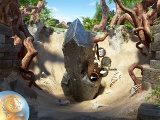
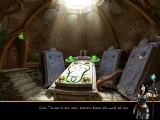
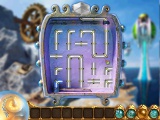
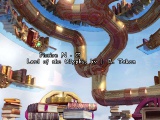
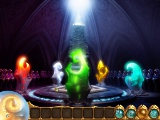
Ancient Secrets: Mystery of the Vanishing Bride
Paige Harper and the Tome of Mystery
Master Thief - Skyscraper Sting
Born Into Darkness
"C:\ProgramData\Oberon Media\Channels\110500670\4.0.0.0\Launcher.exe"
/Name="Hidden Object Mystery Pack 4-in-1" /sku=510005315
/url=http://userassets.apizone.betaregion.oberon-media.com/Launcher/App/
LauncherPage.aspx /Channel="110500670"
If I located the "bundler.exe" in the game directory and made the shortcut
start that, the game would play without the webpage nonsense showing "other
games you might want to play" that I normally see, but it was also impossible to
enter the key. So, I installed the game again on C:, entered the key, moved the
game to another drive and pointed the shortcut to "bundler.exe". Because the
Oberon/CasualGames install uses "%Program Files%" to find the game icon, the
icon location has to be changed, too. And, clearly, a lot of unnecessary crap
collects in "C:\ProgramData", but it doesn't take so much space that it needs to
be cleared out just yet.

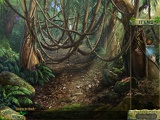
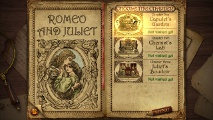
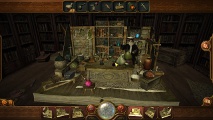
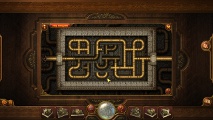
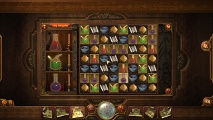
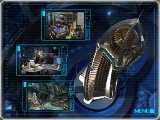
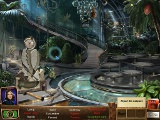
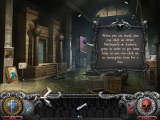
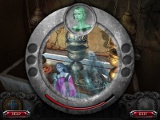
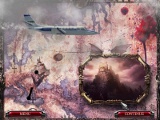
Women's Murder Club: Death in Scarlet
Women's Murder Club: A Darker Shade of Grey
Women's Murder Club: Twice in a Blue Moon
